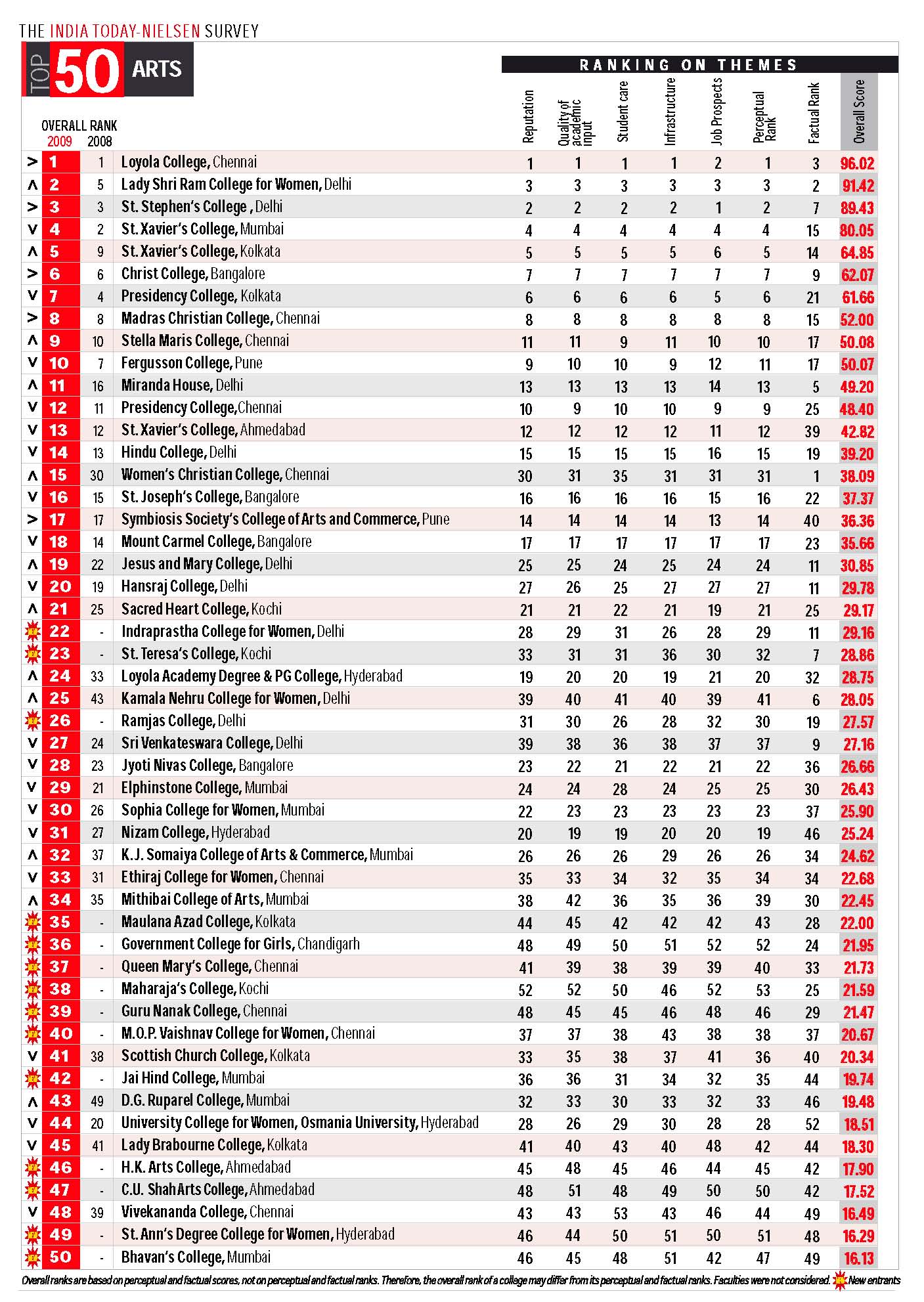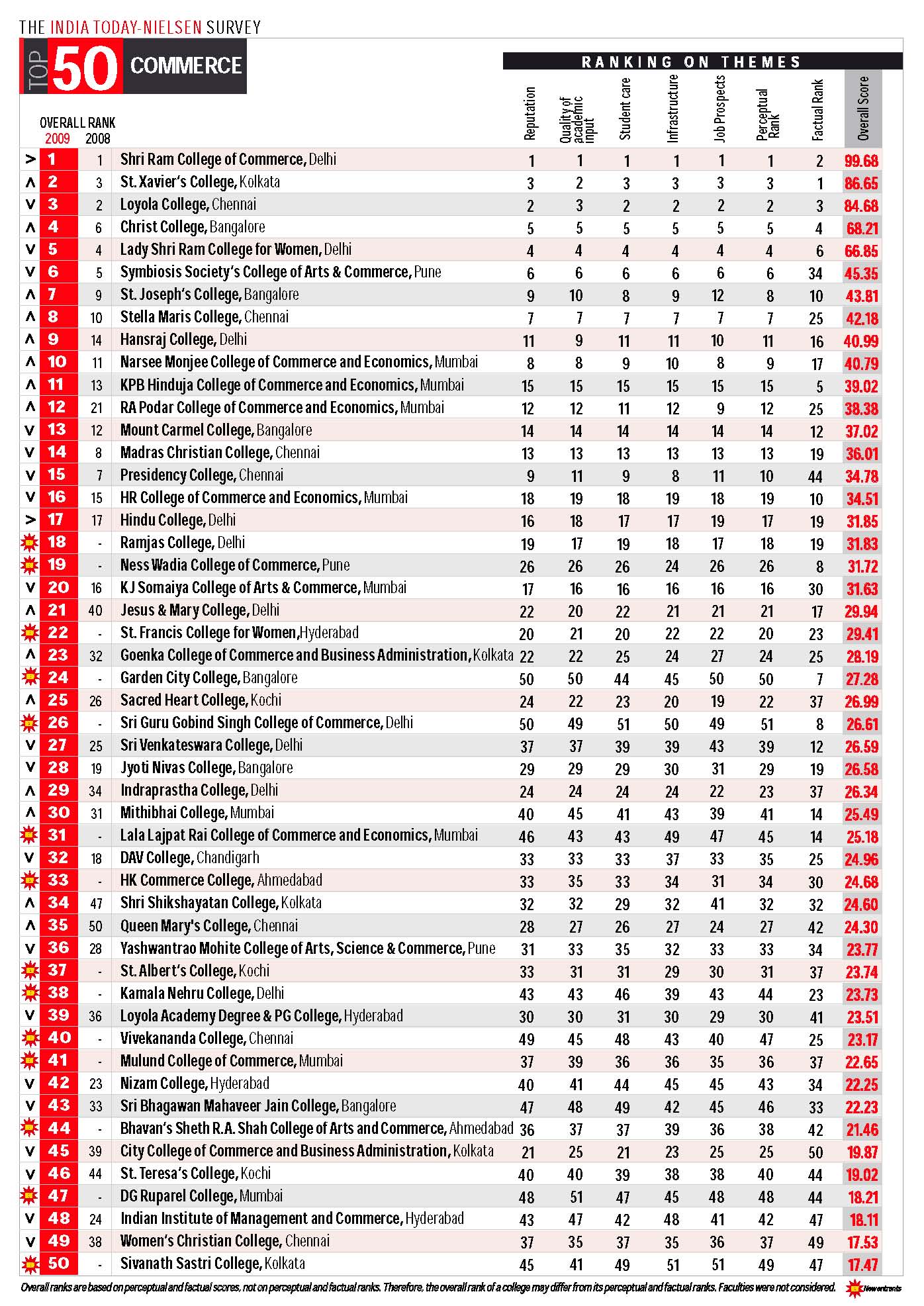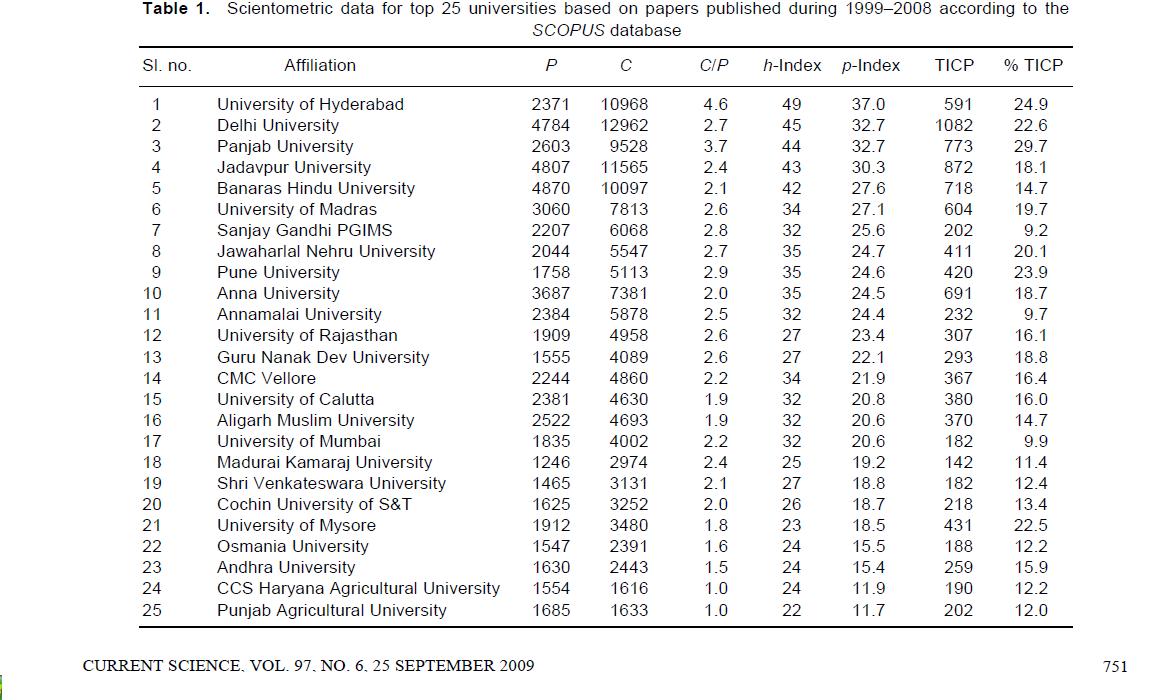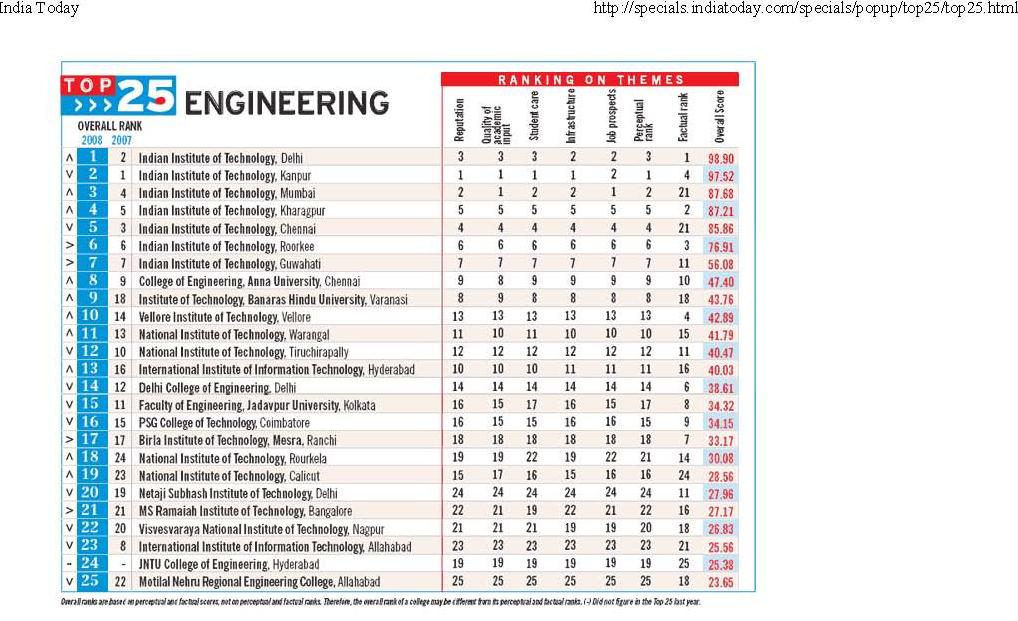Following is an excerpt from a report in Telegraph.
A committee of vice-chancellors has outlined a set of criteria for selecting institutions with the potential for excellence as Navaratna Universities, which will then be given more autonomy and resources.
“The Navaratna Universities would be India’s answer to the Ivy League of the US. These universities will be distinguished ones and will set an example for other institutions in the country,” Seyed Hasnain, the vice-chancellor of the University of Hyderabad, told The Telegraph.
… The suggested criteria include research output, patents, publications, sponsored projects, research grants received, ranking by the National Accreditation and Assessment Council and international agencies, funds, admission procedure, quality of faculty, financial support to students, and the ability to attract foreign students.
The government has asked the committee to submit a final report within two months.
All central and state universities can vie for a place in the Navaratna category, Hasnain said, adding that the group need not necessarily consist of nine institutions.
The universities selected will be provided additional financial support and given the right to hire teachers of their choice, appoint faculty by invitation, set up campuses abroad, hold faculty fairs in foreign countries, engage with institutions of repute for research and generate more resources from sponsored projects.
“The idea is that while setting up more institutions with the aim of achieving international levels, the existing institutions should not be left behind. It is a very good move by the government because the Navaratna institutions will be role models for others,” said Deepak Pental, vice-chancellor of Delhi University.
… Germany has categorised nine universities as Universities of Excellence, China has a similar group of 11 institutions and Australia has its Group-8, made up by the country’s top eight universities.
“This move will create a spirit of competition among institutions to excel. In the process, the quality of education and the standards of institutions will improve,” said Abdul Wahid, vice-chancellor of the Central University of Kashmir.
This is a great idea. The measures should be transparent so that the universities that are left out of it can aim to achieve those measures for future inclusion in that group. I hope some universities from Odisha would make into that list, but even if that does not happen, I think having those measures will enable the Odisha universities to argue for more funding and improving themselves.
See https://www.orissalinks.com/archives/3214 for a ranking of Indian universities based on publication counts. That ranking should give an idea of which universities stand a good chance of achieving Navaratna status.
For the future, there should be a way for additional universities to get Navaratna status. That will encourage the universities that do not get the status in the first round to improve themselves. It will also encourage consolidation and creation of more wholesome universities that have engineering colleges and medical colleges as their components.
October 5th, 2010
The ranking is done by an Australian group based on a measure they call RPI (Research Performance Index). The ranking is at http://www.highimpactuniversities.com/rpi.html.
The ranking uses:
- Publications policy:
- periods are between 2000 to 2009 inclusive
- types are restricted to journal and conference articles, and authored and edited books
- citations can be from any source
- Credit policy:
- credit is given to the institution where the work was performed (not the current affiliation of the authors)
- credit is given to all institutions involved
- credit is given to one or more faculties wherever appropriate
The methodology of the ranking is that they divide the university faculty to five groups:
- MDPHS= Medicine, Dentistry, Pharmacology, and Health Sciences
- PNMS= Pure, Natural, and Mathematical Sciences
- ECT= Engineering, Computing, and Technology
- LBAS= Life, Biological and Agricultural Sciences
- AHBSS= Arts, Humanities, Business, and Social Sciences
1. For each group the g-index of the publications are determined using the SCOPUS database. The The g-index is defined as the highest count g of publications, such that taken together, have an average of at least g citations per publication. (L. Egghe, “Theory and Practise of the g-index,” Scientometrics, Vol. 69, No. 1, pp. 131-152, Jan. 2006.)
2. Then they divide or normalize the g-index for each faculty by that of the highest globally performing faculty
3. Then they average or sum the normalized faculty indices to arrive at a final RPI value for a particular university
Based on this only two Indian Institutions appear in the top 500.
- IIT Kanpur at 444
- IISc Bangalore at 468
They also give the ranking for each of the five groups. Following are Indian institutions in those rankings.
- MDPHS= Medicine, Dentistry, Pharmacology, and Health Sciences http://www.highimpactuniversities.com/fac1.html
- PNMS= Pure, Natural, and Mathematical Sciences http://www.highimpactuniversities.com/fac2.html
- IIT Kanpur at 222
- IISc Bangalore at 273
- Punjab University at 380
- IIT Madras at 413
- IIT Roorkee at 497
- IIT Kharagpur at 507
- IIT Bombay at 507
- ECT= Engineering, Computing, and Technology http://www.highimpactuniversities.com/fac3.html
- IIT Kanpur at 104
- IISc Bangalore at 148
- IIT Madras at 230
- IIT Delhi at 258
- IIT Bombay at 341
- IIT Kharagpur at 367
- Jadavpur University at 398
- IIT Roorkee at 413
- LBAS= Life, Biological and Agricultural Sciences http://www.highimpactuniversities.com/fac4.html
- AHBSS= Arts, Humanities, Business, and Social Sciences http://www.highimpactuniversities.com/fac5.html
To me this ranking makes the most sense of any ranking I have seen as it is based on data, and it basically looks at the quality of faculty in terms of the impact of their publications.
September 30th, 2010
Sources suggest that the Xavier University Bill is getting finalized and may be introduced in the Odisha assembly in the upcoming assembly session. There is plan that the proposed Xavier University (which will be established by the XIMB people) will have undergraduate programs including in Arts and Commerce.
This would be a Godsend. While Odisha now has top notch programs in Engineering (at IIT, NIT, VSSUT, CIPET), Science (NISER), Law (NLUO), Business (XIMB), Social Work (NISWASS), Public Health (AIPH, and soon IIPH) and Education (RIE), and soon will have a top notch program in fashion design (NIFT) and medicine (AIIMS-like Institute), it does not have top programs in Commerce and Arts. Thus the proposed Xavier University offering these programs will fill a huge lacuna. There are several reasons I believe that the Arts and Commerce programs at the proposed Xavier University will be top notch.
- They have track record in Odisha and India. Their XIMB is among the top ranked business schools in the country.
- The top ranked Arts and Commerce programs in the country include many other sister Jesuit institutions such as Loyola Colleges, St. Xavier’s colleges and St. Joseph’s colleges.
- Xavier University being a university will be able to modernize and revise its programs at will and thus will have advantage over other colleges that need to work with their universities. (Some of the top ranked colleges are now autonomous though.)
- Many of the other top ranked colleges are uni-disciplinary. Xavier University will be able to share faculty among multiple programs and thus able to create more multi-dimensional programs.
The proposed Xavier University offering top notch arts and commerce programs would help the other institutions to improve their arts and commerce programs and may even encourage other groups (such as KIIT and ITER) to establish good programs in Arts and commerce.
Thus the Odisha government should not delay and speed up the creation of Xavier University.
Following is from India Today’s 2009 list of top ranked Arts and Commerce programs in India.


May 2nd, 2010
The following table is from a Current science article by G. Prathap and B. M. Gupta. It gives a ranking of top 25 universities in India in term of their publications. The detailed methodology of the ranking is discussed in the above mentioned article. The same authors earlier ranked the engineering and technological institutes which we discussed here.

October 1st, 2009
Tathya.in (see also Pioneer) reports that XIMB (Xavier Institute of Management, Bhubaneswar) is contemplating to become or create a university so as to accommodate its expansion plans.
This is a great idea.
As of now, XIM B is the best ranked higher education institution in Orissa. 2008 Outlook ranking has it at number 8 among the management institutions in India and number 3 among the private management institutes (XLRI is number 1 privatre management school in that list ). The next best ranked institute from Orissa is NIT Rourkela which is often ranked in the early thirties among engineering colleges/institutions. The best it has been ranked is 18.
Besides XIMB, the Xavier brandname is well established in India and abroad. In India, XLRI Jamshedpur is higher ranked than XIMB and is a perennial top 10 among management institutions in India. Similarly, XISS (Xavier Institute of Social Sciences) Ranchi is also well thought off. In USA, there are three Xavier Universities: http://www.xavier.edu/ (Cincinnati), http://www.sxu.edu/ (Chicago), and http://www.xula.edu/ (Louisiana) and are all well regarded.
The Xavier institutions are Jesuit institutions and XIMB was established by the Jesuit Society of India. Besides the Xavier institutes the Jesuit society also established the many well known Loyolla colleges in India. In US, there are about 30 Jesuit universities including famous ones like Georgetown University and Boston College. See http://en.wikipedia.org/wiki/Association_of_Jesuit_Colleges_and_Universities for the list.
With such background and past history of establishing and running quality higher educational institutions, a Xavier University in Orissa, which will be the first such university in India, would be a coup for Orissa and the Orissa government should jump at it, expedite this proposal and provide all necessary support.
In this regard, it may be noted that while the Sri Sri organization have a few higher education institutions, none of them appear in any ranking. In case of Vedanta University, they do not have a past track record. They do have very good people, plans and consulting agencies associated with it and one can imagine that they will be top notch.
But in case of Xavier there is no need of any imagination. With XIMB and XLRI they have proven themselves in India and with the Xavier Universities in the US and with Gerorgetwon University they have proven themselves internationally. So this is a great opprtunity for Orissa, which it should not let slip out. Also, it should expedite the process so that the first Xavier University in India is in Orissa. XLRI has contemplated becoming a deemed university. Xavier University in Orissa should be established before that happens. The one that is first has a first-mover’s advantage and that advantage should not be squandered away.
July 25th, 2009
Recently Educationtimes.com, a part of of Times of India, together with Gfk Mode, has done a ranking of universities across India in various disciplines. There methodology, in their own words, was as follows:
This survey was open to prominent universities across India and invitations were sent to 225 universities.
Among the 225 prominent universities invited, 136 participated. This constitutes around 61% participation.
Some universities refused to participate. Whereas many universities could not provide the required information within our time frame.
The contact persons at the universities were: the registrars, deputy registrars, principal, dean or the administrative heads.
That is it. They sent the surveys. Regardless of whether people participated or not; regardless of the veracity of what was given back; they made a ranking.
The parameters they used may seem reasonable to many, but to me there is a very simple way to rank Universities and Colleges in India. Just use faculty quality as the first parameter and if their is a tie then use the student quality as the second parameter. That’s it!
April 1st, 2009
Following is an excerpt from a report in Pioneer.
… the Synovate survey of the Outlook magazine has put KIIT School of Technology, a constituent of KIIT University in the 18 the position among the top 100 private technical colleges of the country in the same league as prestigious institutes such as BITS of Pilani, PSG College of Technology of Coimbator, BIT of Mesra, Thapar University of Patiala and VIT University of Vellore. It is the only institute from Orissa to feature in this elite list of private engineering colleges.
The survey, which conducted every year to reveal the names of 100 topmost colleges of the country, focuses on five basic parameters such as intellectual capital, pedagogic system, industry interface, infrastructure and facilities and placements. However, while most of the colleges figuring in the list have a history of 50 to 100 years, KIIT is only ten- years-old. KIIT has substantially improved its rank this year compared to the previous years. It was ranked 37th in 2007 and 100th in the year before.
June 21st, 2008
(Source: Livemint.com/ Dt. 12.06.08)
Livemint, a joint initiative of Hindustan Times and the Wall Street Journal has come up with a set of ranks for the various educational institutions in India cutting across Medicine, Law and Engineering amongst others.
The indicative list is as under:
Medicine:
1. AIIMS, New Delhi
2. CMC, Vellore
3. AFMC, Pune
Law:
1. National Law School of India University (NLSIU), Bangalore
2. NALSAR University of Law, Hyderabad
3. National University of Juridical Sciences (NUJS), Kolkata
Engineering:
(Govt. Colleges)
1. IIT, Kharagpur
2. IIT, Kanpur
3. IIT, Mumbai
The above list has two Institutes from Orissa:
- NIT, Rourkela at 31
- UCE, Burla at 50
June 19th, 2008

June 17th, 2008



